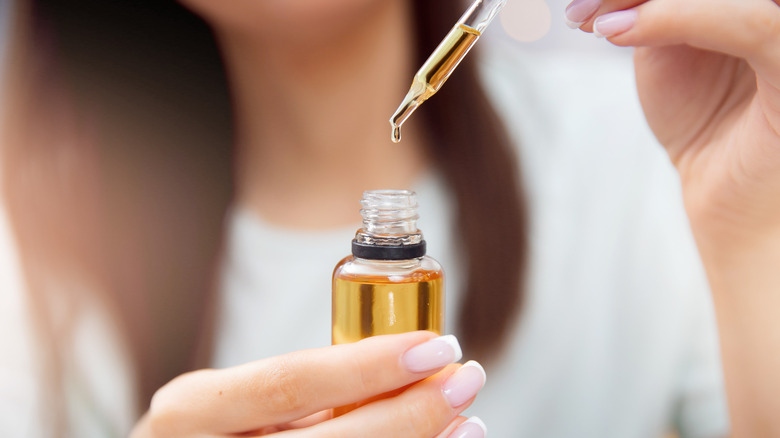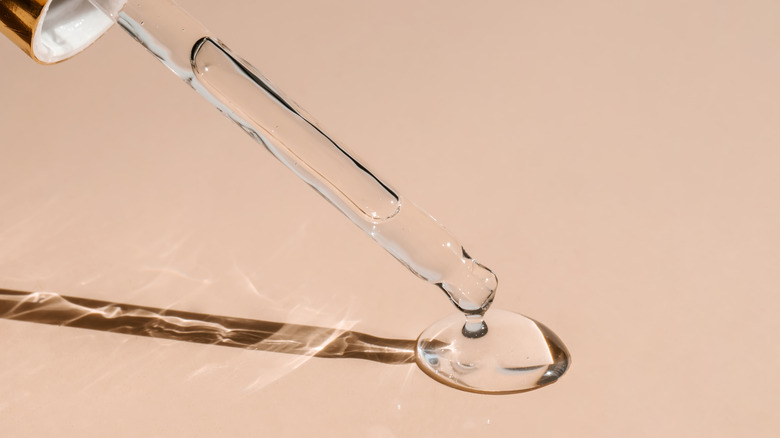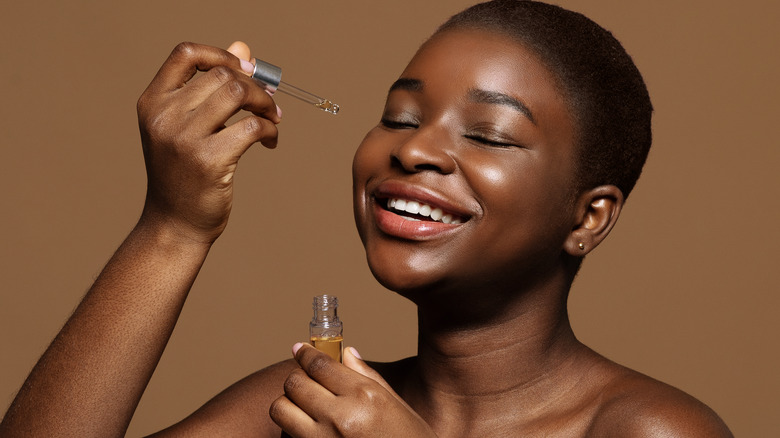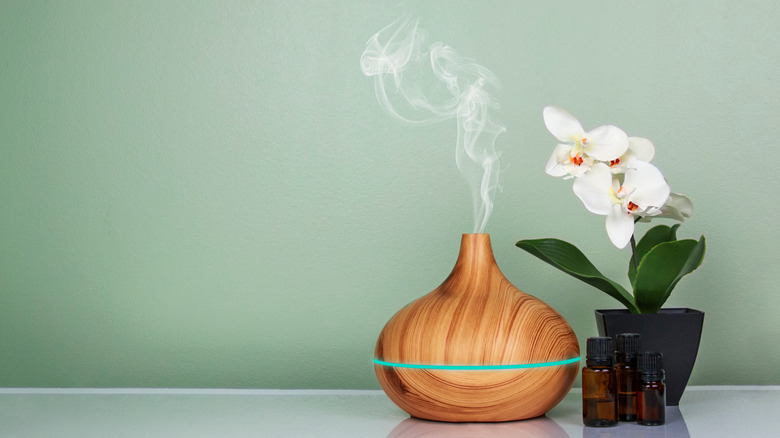How To Tell If Your Essential Oils Are The Real Thing
Over the years, essential oils have become well-known for everything from improving the scent of your home to alleviating a variety of health issues. While essential oils are definitely seeing a resurgence in popularity, they're not as new as you may think. The remedy actually dates back to as early as 4500 B.C. when Ancient Egyptians used them in cosmetics and ointments, per the Handbook of Essential Oils.
Even with such longstanding history, it's not uncommon for some people to question the validity and efficacy of essential oils. In fact, as Insider points out, only 34% of Americans believe essential oils actually provide any type of health benefit.
Regardless of whether they work or not, the essential oils market was an $8.74 billion industry in 2020, and that number is expected to grow to $18.2 billion by the year 2028, per Fortune Business Insights. Here's how to know if your essential oils measure up.
Opt for pure essential oils
Healthline defines pure essential oils as oils that only contain aromatic plant compounds. Simply put, if there are any additives, fragrances, or synthetic oils, then it's not pure. One apparent sign that your essential oil is pure is that the botanical name will be listed instead of a description. For example, a pure bottle of lemongrass essential oil will have "Cymbopogon citratus" or "Cymbopogon flexuosus" on the label instead of "essential oil of lemongrass." Aroma Web has an extensive, easy-to-use directory that lists both the common name and botanical name of just about any essential oil you're looking for.
Another tip for finding pure essential oils, per Johns Hopkins Medicine, is to look for oils in dark-colored glass containers — usually blue or brown. Pure essential oils are stored in glass because they can dissolve plastic over time.
According to New Directions Aromatics, there are international organizations that exist to create and maintain guidelines for essential oils. The International Organization for Standardization (ISO) oversees characteristics like aroma, color, density, and other factors that don't only speak to both the purity and safety of essential oils. Nationally speaking, the United States Pharmacopeia (USP) supervises content pertaining to essential oil quality.
Choose specific essential oils for specific concerns
Are you using the right essential oil for the issue you're trying to address? Because there are so many essential oils — some of which focus on the same problem — it's easy to become confused about which essential oils are ideal for the matter at hand. These 7 essential oils are thought to help with specific issues: basil oil (stress relief), cedarwood oil (hair growth), ginger oil (knee pain), helichrysum oil (scar prevention), jasmine oil (anxiety and depression), lavender oil (postpartum depression), and rose oil (menstrual cramps).
The Cleveland Clinic notes that other benefits of lavender and cedarwood can also help you get a good night's sleep. Some other popular essential oils mentioned include bergamot oil (anxiety, mood booster, blood pressure reducer), eucalyptus oil (pain relief, herpes, sinuses), frankincense oil (inflammation, mood), lemon oil (anxiety, depression, pain relief, nausea, bacteria killer, cognition improvement), and lemongrass oil (stress, anxiety, depression, antibacterial, blood sugar reducer).
Technically, neither food grade nor therapeutic grade essential oil exists
Yes, you read that right — "food grade" and "therapeutic grade" are marketing terms that don't hold any weight when it comes to how essential oils are used. The U.S. Food and Drug Administration (FDA) doesn't even classify essential oils as food grade. It is more concerned with the "intended use" of the essential oil, a phrase that more so determines if the product should have a nutrition or supplement label.
The FDA does, however, categorize foods and essential oils in what's called a Generally Recognized as Safe (GRAS) list. This can be tricky because some essential oils listed, like mustard, are actually toxic when ingested. As a rule of thumb, you don't need to ingest essential oils to make sure they work.
According to Healthline, you should inhale them by using a diffuser or humidifier, or by taking a sniff directly from the bottle. Another option is to mix the essential oil with a carrier oil and apply it directly to your skin. You can also mix it with body wash, shampoo, or in the bath.




